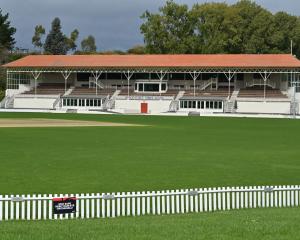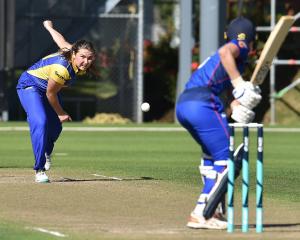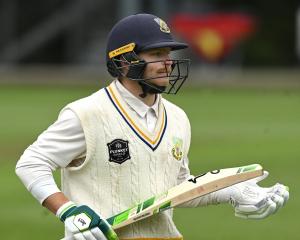Rangana Herath's left-arm orthodox deliveries were accurate and probing but the New Zealand batsmen - Kane Williamson excepted - hinted he was hurling chainsaws on the low, slow Dhaka wicket. Herath finished with five for three from 3.3 overs, the third-best figures in T20 internationals, including 18 dot balls.
The achievements at home against the West Indies and India outweigh being shunted from an event cluttering the international landscape, but playing spin under pressure in the subcontinent often creates contagion in the New Zealand dressing room. To be considered a top international team, New Zealand have to start winning regularly in that part of the world.
New Zealand Cricket have taken the initiative on this before. Last year, an A team went to India before the Bangladesh tour in October. New Zealand drew the tests and lost the ODIs. They drew a subsequent ODI series in Sri Lanka.
A more active antidote might be required, like cricketers committing to subcontinental working holidays. That way batsmen and bowlers get better, which, in turn, improves the quality of spin in New Zealand's domestic competitions. Promising players could be encouraged to forgo the time-honoured OE tradition of English leagues and pints of best bitter to head for a cocktail of maidans and masala.
NZC could establish links through former national players and coaches who have forged solid subcontinental contacts like David Trist, John Wright and Stephen Fleming.
Such OEs would introduce players to the wiles of spin at an early age, hopefully with the long-term benefit of representing New Zealand more competently.
Donning a cap in humid mid 30-degree temperatures and practicing your craft on the dustbowls of a maidan on a Saturday afternoon, just like Sachin Tendulkar did a generation ago in Mumbai, must hold allure.
Australian Matthew Hayden personified the benefits of immersion when he prepared against spin for a month in India ahead of the legendary 2001 test series which the hosts came back to win 2-1. Hayden finished the series with an average of 109.80, more than twice that of his next best team-mate (Steve Waugh at 48.60).
Immersing experienced New Zealand players in subcontinental provincial competitions is not without difficulty. India, unlike New Zealand, tend to keep a tight rein on allowing internationals into the Ranji Trophy because of its sacrosanct status as a test nursery.
Trist acclimatised to the culture by visiting the Indian city of Pune regularly over 12 years to assist with coaching and developing the game.
He also went on subcontinent tours as a New Zealand player (1969-70) and coach (1999-2001).
"It's totally logical to send players for sustained periods because unless you conquer at the homes of four test nations, you're seldom going to be in the money on the world stage.
"I've never fully understood why NZC has not established a relatively cheap base there. Once airfares are paid, the costs are not huge. I think the issue is New Zealand has a hangover from the days when going there was equivalent to a death warrant with the state of food and hygiene. Today, as a burgeoning middle-class develops in India and Sri Lanka, it's more doable."
Trist says a mindset exists where touring the subcontinent equates with drudgery.
"That's why we see pre-tour camps held in Australia or 'somewhere more convenient'. Those environments counter the heat but not the culture shock.
"You've got to take a pragmatic approach to bridge the gap if New Zealand is to be an outstanding, rather than promising, international side. Embrace the vagaries of pitches, heat and the challenges to preparation. Play spin constantly; India's not exactly short of quality net bowlers.
"On the flipside, India has learned a lot from other countries. Many of the Indian Premier League franchises appoint overseas coaches because it helps generate new ideas."
New Zealand coach Mike Hesson says they can't treat the World T20 crumble as an epidemic.
"We've scored a lot of runs in the last year or so against spin, like 600-plus against [West Indian] Shane Shillingford and Co [in Dunedin]. Our high-performance plan to play spin occurs before the Black Caps, like through our A team programme. By the time they get to the Black Caps, they should have had an abundance of cricket to experiment building defensive screens and be in a position to put those quality training hours into practice.
"Last year, we sent the likes of Anton Devcich, Jimmy Neesham, Colin Munro and Tom Latham to the subcontinent as examples of players who needed experience there.
"It is not difficult to build relationships with academies and associations. It's more about finding the necessary resource and finance and finding a space to fit it into the month a player has off each year.
"We're using their coaches to teach our players methods which could come in handy."
Hesson says spinners also need to visit.
"They have to adapt to the conditions by bowling more into the wicket on the subcontinent because the variation comes more from skidding and turning on the surface rather than in the air."
- Andrew Alderson












